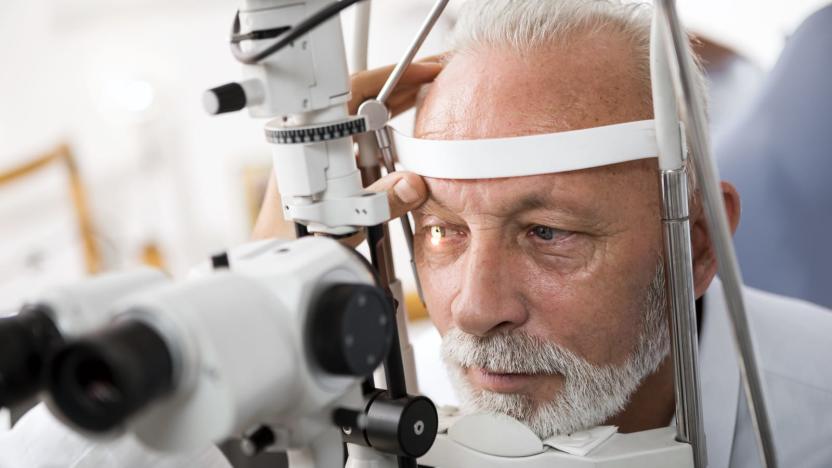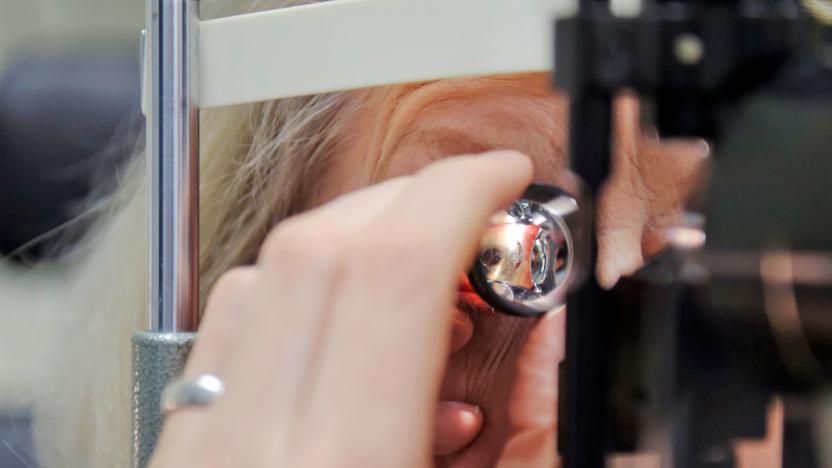glaucoma
Latest

IBM hopes AI can speed up glaucoma treatment
A glaucoma diagnosis typically requires multiple painstaking tests to accurately gauge vision loss. If IBM has its way, though, you might just have to ask a computer to do the hard work. The company's research wing has used AI to discover retina imaging data that could be used to detect and manage glaucoma. A deep learning system estimates the visual field index (the degree of visual function) based on a single 3D scan of the optic nerve, giving an idea of how glaucoma has developed with greater accuracy than conventional tests.

Magnetic eye implants could save the eyesight of glaucoma patients
Glaucoma patients can use implants to treat the condition by draining the eye, but the existing technology rarely lasts more than a few years thanks to the accumulation of microorganisms that wreck the functionality. A Purdue-led team might have a clever technological solution, though: magnetism. The group has developed a smart implant that cleans itself with microactuators that vibrate whenever you induce a magnetic field. It would not only be far more reliable, but could be customizable as well.

High-tech solutions top the list in the fight against eye disease
"The eyes are the window to the soul," the adage goes, but these days our eyes could be better compared to our ethernet connection to the world. According to a 2006 study conducted by the University of Pennsylvania, the human retina is capable of transmitting 10 million bits of information per second. But for as potent as our visual capabilities are, there's a whole lot that can go wrong with the human eye. Cataracts, glaucoma and age-related macular degeneration (AMD) are three of the leading causes of blindness the world over. Though we may not have robotic ocular prosthetics just yet, a number of recent ophthalmological advancements will help keep the blinds over those windows from being lowered.

Your smartphone could soon act as a glaucoma testing device
We've seen smartphones work as electrocardiograms, so why not use them to test for glaucoma at home? That's the idea behind Cambridge Consultants' Viewi headset. Rather than hitting the hospital or optometrist's to monitor your vision, you could simply slide your phone into a head-mounted Gear VR-like holster. From there, a mobile app reproduces the flashing light patterns used to test for open-angle glaucoma. A Bluetooth remote acts as the input device for patients to press when they see a flashing light and, really, that's about it, according to the press release.

Researchers debut one-cubic-millimeter computer, want to stick it in your eye
This as-of-yet-unnamed mini computer was fashioned as an implantable eye pressure monitor for glaucoma patients, but its creators envision a future where we're all crawling with the little buggers. Taking up just over one cubic millimeter of space, the thing stuffs a pressure sensor, memory, thin-film battery, solar cell, wireless radio, and low-power microprocessor all into one very small translucent container. The processor behind this little guy uses an "extreme" sleep mode to keep it napping at 15-minute intervals and sucking up 5.3 nanowatts while awake, and its battery runs off 10 hours of indoor light or one and a half hours of sun beams. Using the sensor to measure eye pressure and the radio to communicate with an external reader, the system will continuously track the progress of glaucoma, without those pesky contacts. Of course, the mad scientists behind it look forward to a day when the tiny device will do much more, with each of us toting hundreds of the computer implants all over our bodies -- looks like a bright future for cyborgdom.

Glaucoma monitoring contact lenses crafted at UC Davis
Far from the first circuit-laden contact lens we've laid eyes on (ahem), researchers at UC Davis have more than bragging rights in mind with their "smart" contacts. The devices are infused with a "pattern of conductive silver wires, which could be used to measure pressure inside the eye." The material, dubbed polydimethylsiloxane (PDMS), would boast antimicrobial properties and could enable scientists to better study glaucoma. How so? By sending pressure data to computers sans wires. Better still, the contacts also include the ability to automatically dispense medication into the eye, making this beneficial in more ways than one. The creators are expected to apply for approval to begin testing the lenses in humans here shortly, and barring any unforeseen (sorry, totally unintentional there) setbacks, we would hope these could be put to use within the next few years.[Via medGadget]




